您好,登錄后才能下訂單哦!
您好,登錄后才能下訂單哦!
本篇文章為大家展示了Series方法怎么在Python3.5中使用,內容簡明扼要并且容易理解,絕對能使你眼前一亮,通過這篇文章的詳細介紹希望你能有所收獲。
1、Pandas模塊引入與基本數據結構

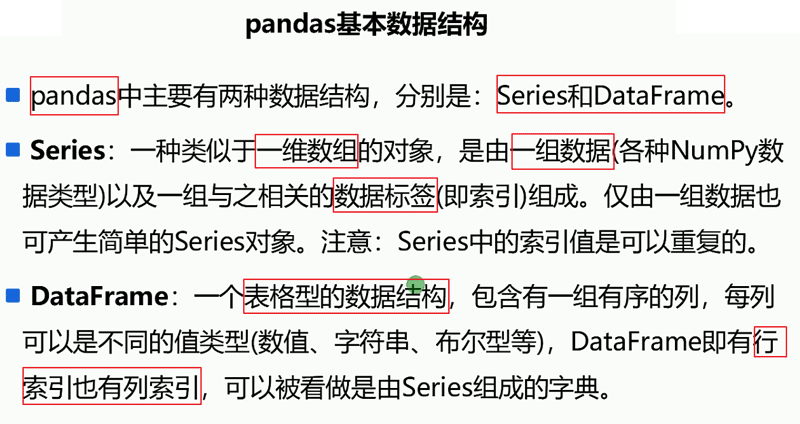
2、Series的創建
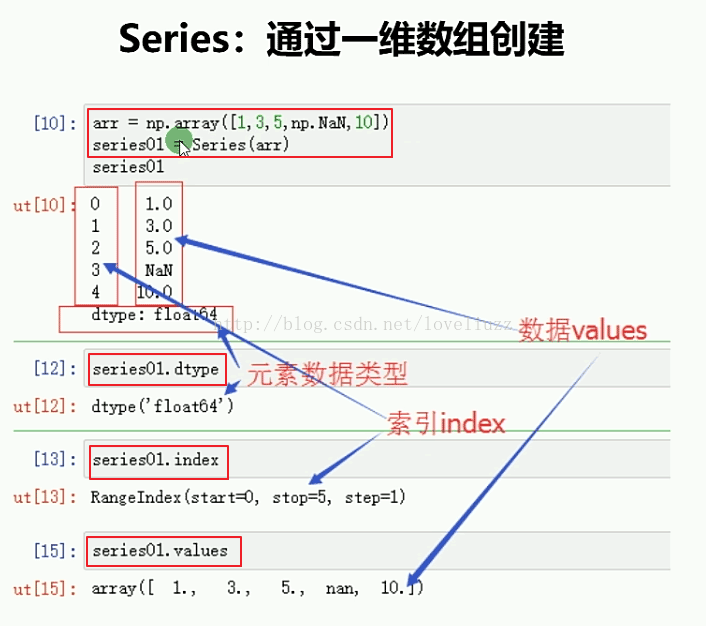
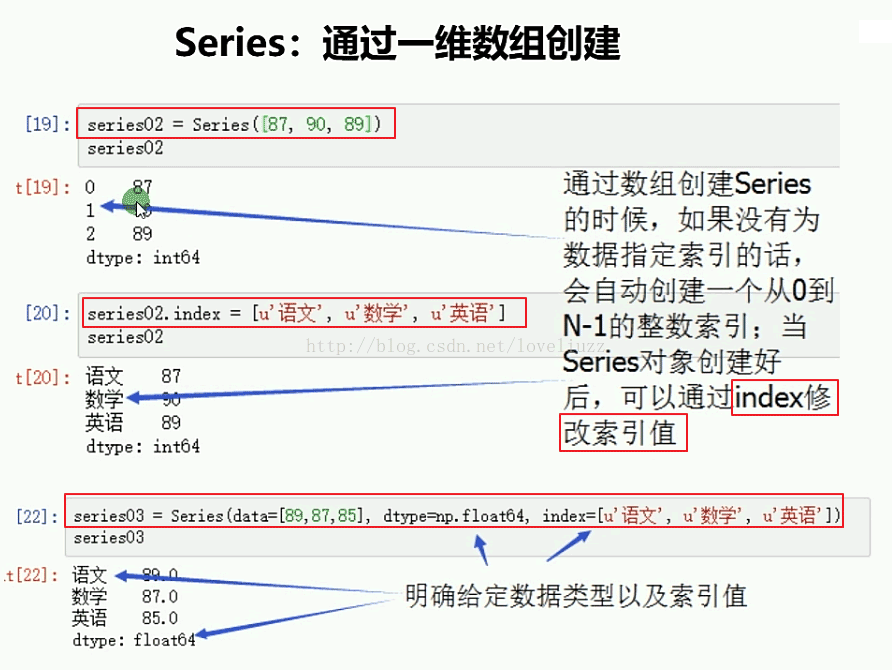
#!/usr/bin/env python
# -*- coding:utf-8 -*-
# Author:ZhengzhengLiu
#模塊引入
import numpy as np
import pandas as pd
from pandas import Series,DataFrame
#1.Series通過numpy一維數組創建
print("=========Series通過numpy一維數組創建==========")
arr = np.array([1,2,3,4,5])
s1 = pd.Series(arr)
print(s1)
print(s1.index)
print(s1.values)
#2.Series直接通過一維數組創建
print("=========Series直接通過一維數組創建==========")
s2 = pd.Series([10.5,20,38,40])
print(s2)
#修改索引值
s2.index = ['a','b','c','d']
print(s2)
#Series通過一維數組創建,可以在創建的同時自定義索引值,
# 也可以之后通過賦值的形式去修改
print("=========Series創建的同時自定義索引值和數據類型==========")
s3 = pd.Series(data=[89,78,90,87],dtype=np.float64,
index=['語文','數學','英語','科學'])
print(s3)
#3.Series通過字典創建,字典的鍵對應索引,值對應數據
print("=========Series通過字典創建==========")
dict = {'a':1,'b':2,"c":3,"d":4}
s4 = pd.Series(dict)
print(s4)運行結果:
=========Series通過numpy一維數組創建==========
0 1
1 2
2 3
3 4
4 5
dtype: int32
RangeIndex(start=0, stop=5, step=1)
[1 2 3 4 5]
=========Series直接通過一維數組創建==========
0 10.5
1 20.0
2 38.0
3 40.0
dtype: float64
a 10.5
b 20.0
c 38.0
d 40.0
dtype: float64
=========Series創建的同時自定義索引值和數據類型==========
語文 89.0
數學 78.0
英語 90.0
科學 87.0
dtype: float64
=========Series通過字典創建==========
a 1
b 2
c 3
d 4
dtype: int64
3、Series值的獲取
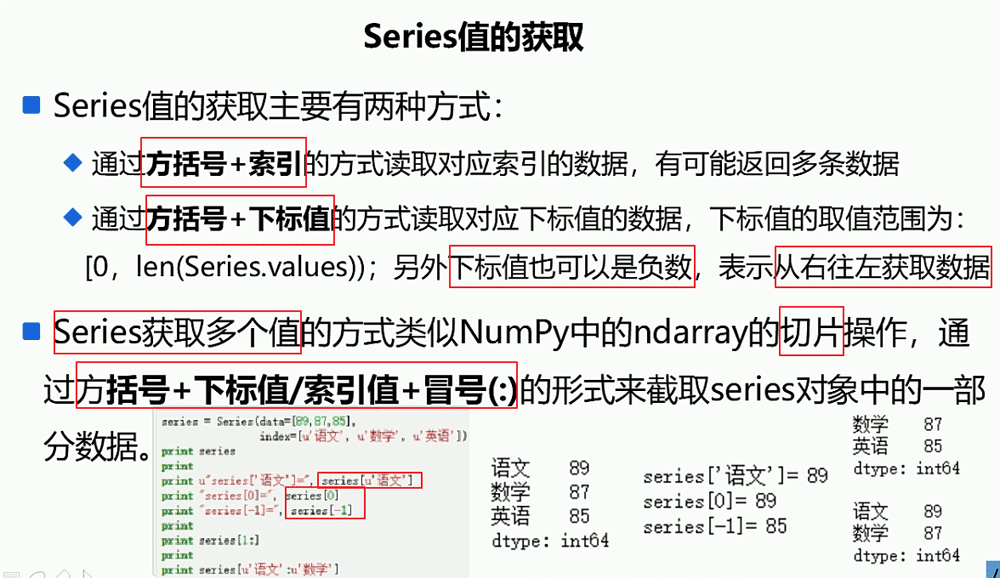
#模塊引入
import numpy as np
import pandas as pd
from pandas import Series,DataFrame
#4.Series值的獲取
print("=========Series值的獲取==========")
s2 = pd.Series([10.5,20,38,40])
#修改索引值
s2.index = ['a','b','c','d']
print(s2)
print(s2[0]) #方括號+下標值的形式獲取Series值
print(s2["a"]) #方括號+索引的形式獲取Series值運行結果:
=========Series值的獲取==========
a 10.5
b 20.0
c 38.0
d 40.0
dtype: float64
10.5
10.5
4、Series運算
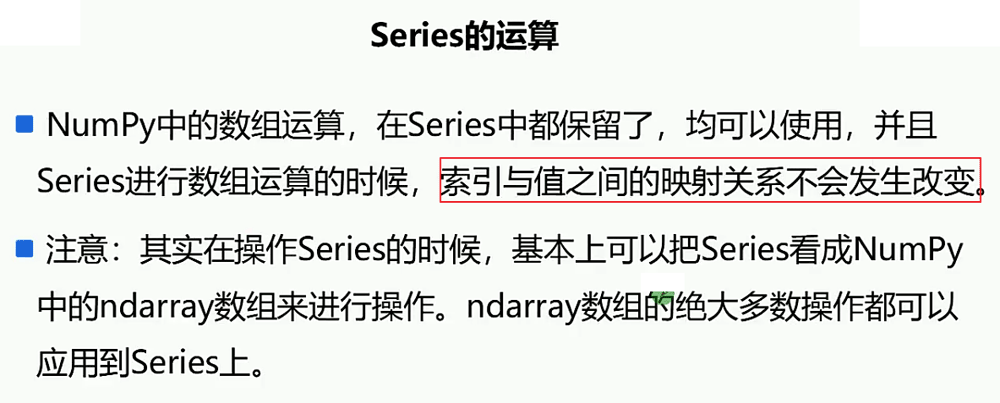
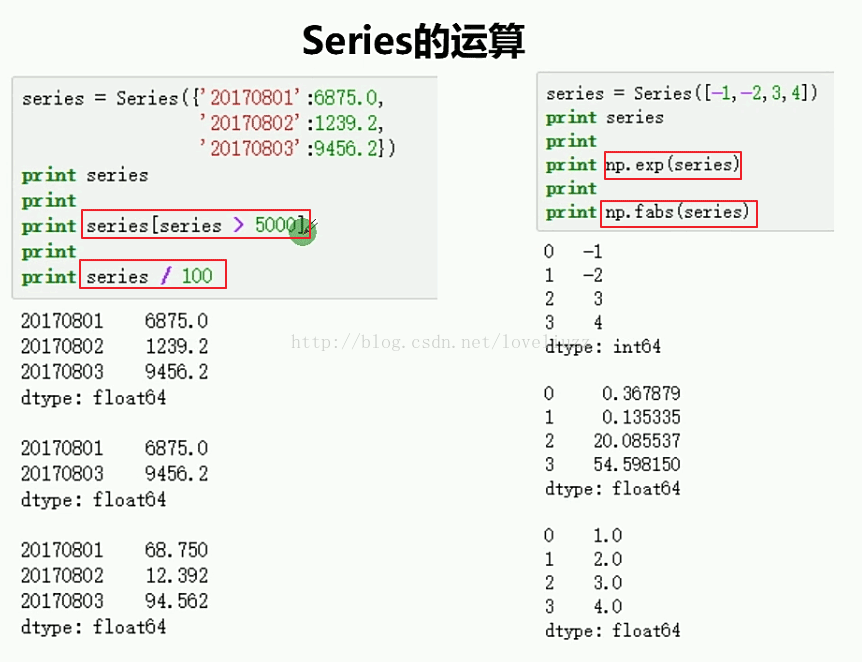
#模塊引入
import numpy as np
import pandas as pd
from pandas import Series,DataFrame
#5.Series值的運算
#Series中元素級別的運算結果,包含索引值并且鍵值關系保持不變
print("=========Series值的運算==========")
s6 = pd.Series({'a':1,'b':2,"c":3,"d":4})
print(s6)
print("=========打印Series大于2的值==========")
print(s6[s6>2])
print("=========打印Series的值除以2==========")
print(s6/2)
#numpy中的通用函數在Series中也支持
s7= pd.Series([1,2,-3,-4])
print(np.exp(s7))運行結果:
=========Series值的運算==========
a 1
b 2
c 3
d 4
dtype: int64
=========打印Series大于2的值==========
c 3
d 4
dtype: int64
=========打印Series的值除以2==========
a 0.5
b 1.0
c 1.5
d 2.0
dtype: float64
0 2.718282
1 7.389056
2 0.049787
3 0.018316
dtype: float64
5、Series缺失值檢驗
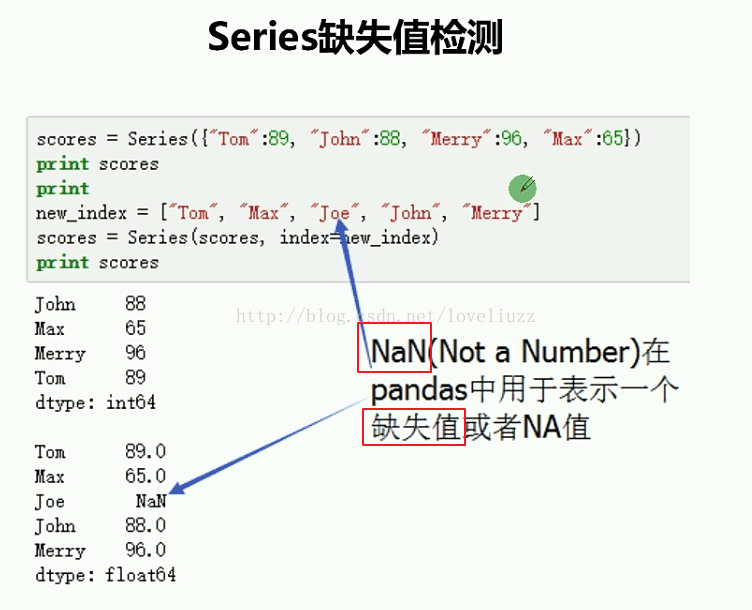
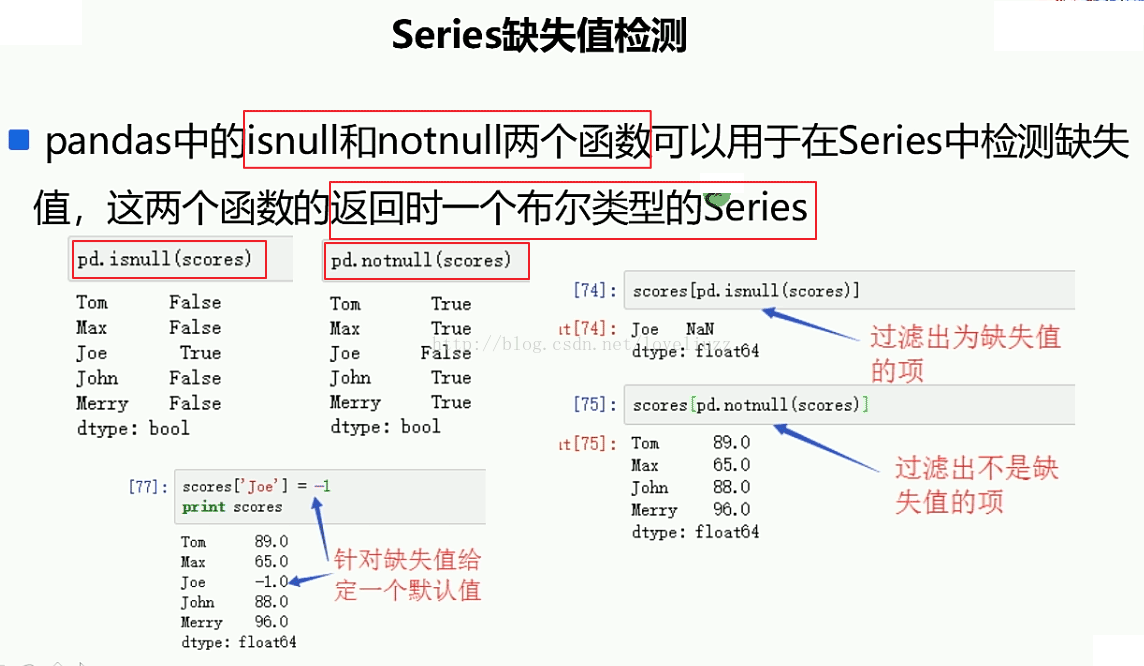
#模塊引入
import numpy as np
import pandas as pd
from pandas import Series,DataFrame
#6.Series缺失值檢驗
scores = Series({"a":88,"b":79,"c":98,"d":100})
print(scores)
new = ["a","b","e","c","d"]
scores = Series(scores,index=new)
print(scores)
print("======過濾出為缺失值的項=======")
print(scores.isnull()) #NAN值返回True
#print(pd.isnull(scores)) #與上面一句等價
print("======過濾出為非缺失值的項=======")
print(pd.notnull(scores)) #非NAN值返回True運行結果:
a 88
b 79
c 98
d 100
dtype: int64
a 88.0
b 79.0
e NaN
c 98.0
d 100.0
dtype: float64
======過濾出為缺失值的項=======
a False
b False
e True
c False
d False
dtype: bool
======過濾出為非缺失值的項=======
a True
b True
e False
c True
d True
dtype: bool
6、Series自動對齊
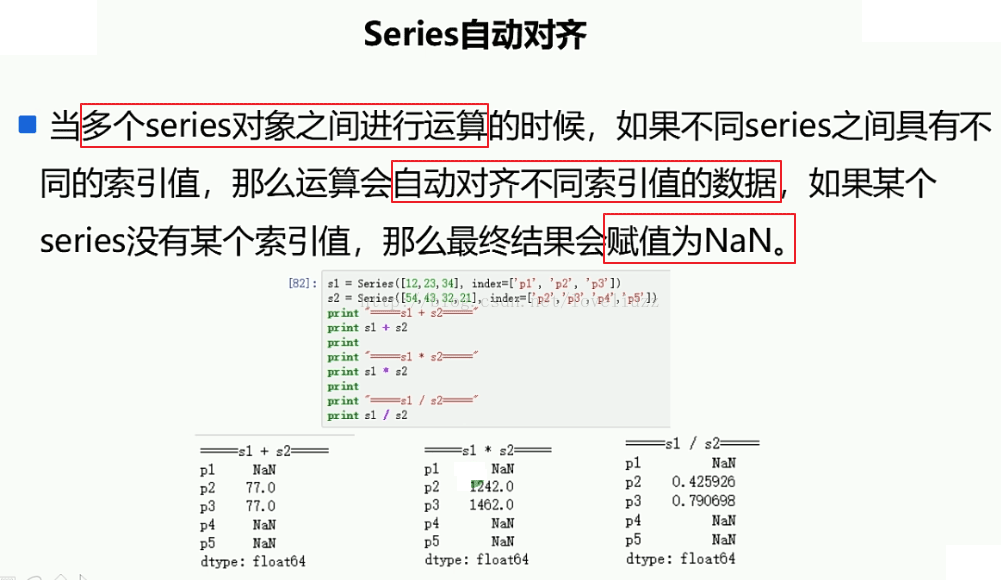
#模塊引入
import numpy as np
import pandas as pd
from pandas import Series,DataFrame
#7.Series自動對齊
s8 = Series([12,28,46],index=["p1","p2","p3"])
s9 = Series([2,4,6,8],index=["p2","p3","p4","p5"])
print("=======s8=======")
print(s8)
print("=======s9=======")
print(s9)
print("=======s8+s9=======")
print(s8+s9)運行結果:
=======s8=======
p1 12
p2 28
p3 46
dtype: int64
=======s9=======
p2 2
p3 4
p4 6
p5 8
dtype: int64
=======s8+s9=======
p1 NaN
p2 30.0
p3 50.0
p4 NaN
p5 NaN
dtype: float64
7、Series及其索引的name屬性

#模塊引入
import numpy as np
import pandas as pd
from pandas import Series,DataFrame
#8.Series及其name屬性
s10 = Series({"jack":18,"amy":20,"lili":23,"susan":15})
print(s10)
print("=======設置name屬性后=======")
s10.name = "年齡" #數據名稱標簽
s10.index.name = "姓名" #索引名稱標簽
print(s10)運行結果:
amy 20
jack 18
lili 23
susan 15
dtype: int64
=======設置name屬性后=======
姓名
amy 20
jack 18
lili 23
susan 15
Name: 年齡, dtype: int64
上述內容就是Series方法怎么在Python3.5中使用,你們學到知識或技能了嗎?如果還想學到更多技能或者豐富自己的知識儲備,歡迎關注億速云行業資訊頻道。
免責聲明:本站發布的內容(圖片、視頻和文字)以原創、轉載和分享為主,文章觀點不代表本網站立場,如果涉及侵權請聯系站長郵箱:is@yisu.com進行舉報,并提供相關證據,一經查實,將立刻刪除涉嫌侵權內容。